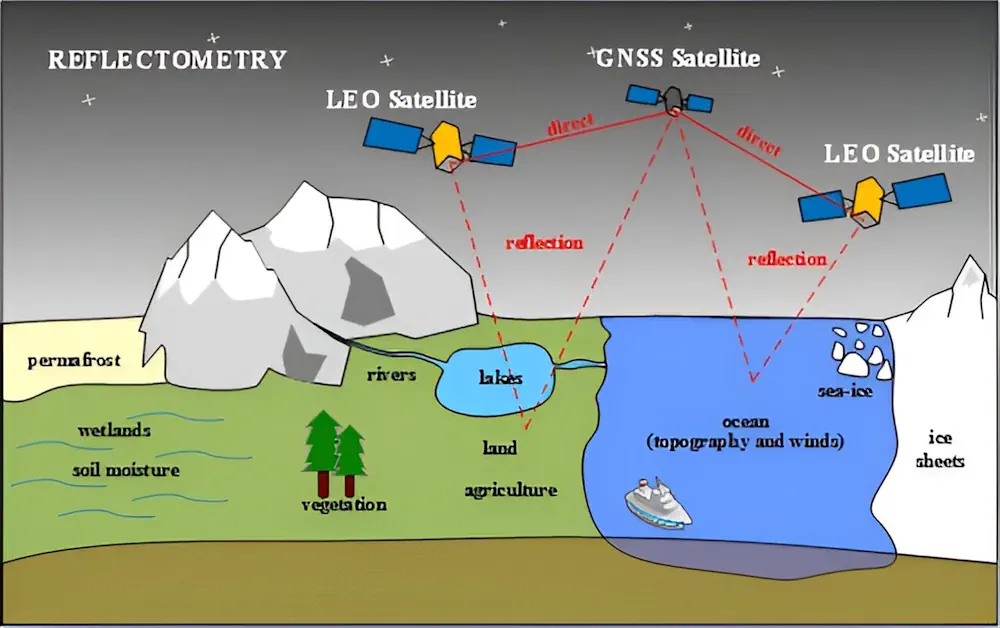Global navigation satellite system reflectometry (GNSS-R) is emerging as a pivotal technology in remote sensing due to its ability to provide high-precision, real-time data under all weather conditions. Traditionally, the GNSS has been utilized for positioning, navigation, and timing. However, recent advancements have demonstrated its efficacy in environmental monitoring through scatterometry and reflectometry.
GNSS-R capitalizes on the reflected signals from Earth’s surface and offers insights into surface properties such as soil moisture, sea surface height, wind speed and ice thickness. Based on these challenges, it is essential to conduct in-depth research to further refine GNSS-R techniques and broaden their applications.
Scientists from international institutions have joined forces to explore the latest advances in GNSS-R, as published in the journal Satellite Navigation on 27 May 2024.
The paper presents a comprehensive review of GNSS-R’s current status, theoretical developments, signal processing, parameters retrieval, and its applications in detecting changes in sea surface height, wind speed, vegetation, soil moisture, and ice thickness.
The study provides an extensive review of the principles, methods, and latest applications of GNSS-R, emphasizing its growing significance in remote sensing. GNSS-R utilizes reflected signals from multiple GNSS constellations (GPS, BDS, Galileo, GLONASS) to measure various environmental parameters.
Key advancements include the development of new GNSS-R receivers and the implementation of ground, air, and space-borne experiments. These innovations have led to improved accuracy in retrieving data on soil moisture, sea surface height, wind speed, and ice thickness.
Significant applications highlighted in the study include evaluating ocean altimetry, estimating soil moisture content, and measuring ice thickness. The research also delves into the challenges faced in GNSS-R development, such as signal processing complexities and the need for enhanced receiver technology.
Future prospects are discussed including multi-GNSS reflectometry, new receiver designs, and emerging applications such as microplastics detection and natural hazards monitoring.
